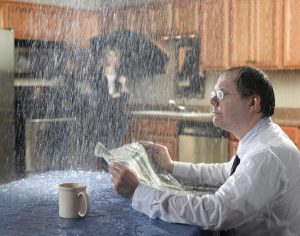
Water Damage Remediation – Exactly what Is It?
Damage to the residential or commercial property could be because of an overflow, flood or any other water damage occasion. The S500 damage due to water guide is the benchmark tool that is utilized by business that specialize in remediation of water damage.
Loss Assessment and Categorization
Classification 1 – This is water from tidy sources like pipes, sinks and toilets without faeces or urine.
Classification 3 – This is water that is highly unhygienic and is capable of causing health problem or death if consumed. Sewage water, water from toilet with faeces, standing water with microbial growth and floodwater are some examples.
Loss assessment is the very first and the most important step in water damage remediation. In restorating the damage triggered by water, technicians and the insurance business need to work together and comprehend exactly what is harmed and how to go about restoring the damage. Recognizing the source of the damage, documentation of damage, and accurate price quotes are obligatory for a correct water damage restoration.
Category 2 – This is water that has some impurities like water from a dishwashing machine, washing machine or toilet with urine.
Decontamination and Drying
After the examination is complete, the process of decontaminating and drying starts at the website. Based on the extent of damage, damage triggered due to water can be classified into 4 types. Class 1 Damage- When loss is restricted to a little location and less water has been soaked up by products. This leads to slow evaporation rate. Class 2 Damage – When the damage is to the entire space and carpet area. Class 3 Damage – When the whole area is filled with water and Class 4 Damage – when there are many deep saturation pockets. Decontamination and drying is an essential stage in Water damage remediation and equipments like blowers, dehumidifiers, scrubbers and subfloor drying devices need to be used. If contamination has actually been detected in the location, Decontamination has to be done. Decontamination may be done for the entire location or in particular pockets where contamination has actually been spotted.
Monitoring and Completion
In restorating the damage caused by water, professionals and the insurance companies should work together and comprehend exactly what is damaged and how to go about restoring the damage. Recognizing the source of the damage, documentation of damage, and accurate quotes are necessary for a correct water damage remediation. Based on the degree of damage, damage caused due to water can be classified into 4 types. Class 3 Damage – When the whole area is saturated with water and Class 4 Damage – when there are many deep saturation pockets.
The S500 damage due to water guide is the benchmark tool that is used by companies that specialize in repair of water damage.
Keeping track of the repair procedure of damage caused due to damage is vital to achieve the wanted results. The whole procedure of water damage remediation would be categorized as total just as soon as the humidity, temperature and the wetness content is as per market requirements. Upon conclusion of the water damage restoration process, the drying devices can be gotten rid of.
Local Resources:
https://www.facebook.com/pg/westbabylonrestorationpros/about/?tab=overview
http://westbabylonrestorationpros.com/services/water-damage-restoration/
